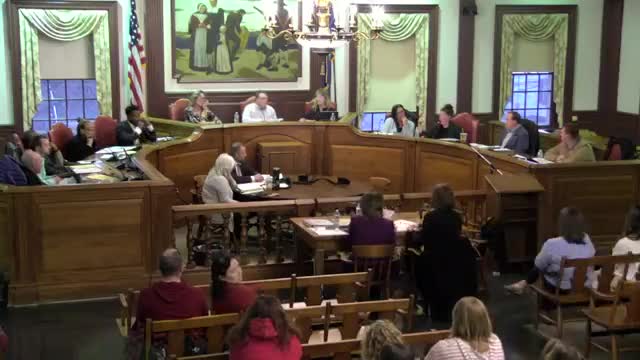Stratford Town Council debates $2M education budget allocation amid funding concerns
March 21, 2024 | Town of Stratford, Fairfield, Connecticut

This article was created by AI summarizing key points discussed. AI makes mistakes, so for full details and context, please refer to the video of the full meeting. Please report any errors so we can fix them. Report an error »

In the dimly lit chambers of Stratford's city hall, the Town Council convened for a pivotal budget workshop, where discussions about the future of education funding took center stage. The atmosphere was charged with urgency as council members grappled with the implications of a proposed $2 million allocation to the Board of Education, a figure that sparked both hope and skepticism among the committee.
The meeting revealed a complex financial landscape, with council members dissecting the nuances of the budget. One member pointed out that while the Board of Education had requested a $2 million increase, the actual town contribution was only $127 million, reflecting a modest increase of approximately $2.1 million from the previous year. This discrepancy raised concerns about the sustainability of educational funding, particularly as the council navigated the constraints of existing ordinances that dictate how funds can be allocated.
A significant point of contention emerged around the classification of the $2 million. Some members argued that it should be considered a "real number" that could directly impact the mill rate calculation, potentially leading to increased taxes for residents. Others cautioned against viewing it as a straightforward solution, emphasizing that the funds were tied to specific uses and could not be applied to general operating costs without further amendments to the ordinance.
As the discussion unfolded, the implications of these financial decisions became increasingly clear. The council faced the daunting prospect of potential cuts to educational programs if the budget did not align with the Board of Education's requests. With over 75% of the budget allocated to staff costs, any reductions would likely impact personnel, raising alarms about the quality of education in Stratford.
The dialogue also touched on the broader context of community support, with members expressing frustration over the perceived lack of engagement from residents, particularly seniors, who often benefit from stable tax rates. The sentiment echoed a desire for a more balanced approach to funding, one that adequately supports both the town's veterans and its children.
As the workshop progressed, it became evident that the council's decisions would have lasting repercussions. The looming fiscal cliff, where future funding could dwindle, underscored the urgency of the discussions. Council members recognized that without a strategic plan to address these challenges, they could find themselves revisiting the same issues in the coming years.
In closing, the workshop served as a crucial reminder of the delicate balance between fiscal responsibility and the need to invest in the future of Stratford's youth. As the council prepares for further discussions, the community watches closely, hoping for a resolution that prioritizes education while maintaining the town's financial health.
The meeting revealed a complex financial landscape, with council members dissecting the nuances of the budget. One member pointed out that while the Board of Education had requested a $2 million increase, the actual town contribution was only $127 million, reflecting a modest increase of approximately $2.1 million from the previous year. This discrepancy raised concerns about the sustainability of educational funding, particularly as the council navigated the constraints of existing ordinances that dictate how funds can be allocated.
A significant point of contention emerged around the classification of the $2 million. Some members argued that it should be considered a "real number" that could directly impact the mill rate calculation, potentially leading to increased taxes for residents. Others cautioned against viewing it as a straightforward solution, emphasizing that the funds were tied to specific uses and could not be applied to general operating costs without further amendments to the ordinance.
As the discussion unfolded, the implications of these financial decisions became increasingly clear. The council faced the daunting prospect of potential cuts to educational programs if the budget did not align with the Board of Education's requests. With over 75% of the budget allocated to staff costs, any reductions would likely impact personnel, raising alarms about the quality of education in Stratford.
The dialogue also touched on the broader context of community support, with members expressing frustration over the perceived lack of engagement from residents, particularly seniors, who often benefit from stable tax rates. The sentiment echoed a desire for a more balanced approach to funding, one that adequately supports both the town's veterans and its children.
As the workshop progressed, it became evident that the council's decisions would have lasting repercussions. The looming fiscal cliff, where future funding could dwindle, underscored the urgency of the discussions. Council members recognized that without a strategic plan to address these challenges, they could find themselves revisiting the same issues in the coming years.
In closing, the workshop served as a crucial reminder of the delicate balance between fiscal responsibility and the need to invest in the future of Stratford's youth. As the council prepares for further discussions, the community watches closely, hoping for a resolution that prioritizes education while maintaining the town's financial health.
View full meeting
This article is based on a recent meeting—watch the full video and explore the complete transcript for deeper insights into the discussion.
View full meeting
